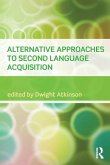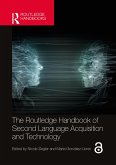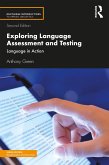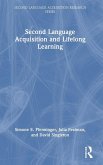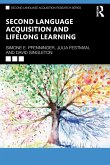Routledge Introductions to Applied Linguistics is a series of introductory level textbooks covering the core topics in Applied Linguistics, primarily designed for those beginning postgraduate studies, or taking an introductory MA course as well as advanced undergraduates. Titles in the series are also ideal for language professionals returning to academic study.
The books take an innovative 'practice to theory' approach, with a 'back-to-front' structure. This leads the reader from real-world problems and issues, through a discussion of intervention and how to engage with these concerns, before finally relating these practical issues to theoretical foundations. Additional features include a glossary of key terms, and discussion questions.
Following the back-to-front approach of the series, the book takes problematic issues in language pedagogy as its starting points. These are then examined in terms of second language acquisition. Each chapter begins with a look at the pedagogical proposals found in teacher guides and then asks 'Do these proposals accord with what we know about how languages are acquired?' Pedagogical topics covered include teaching methods, syllabus design, explicit instruction, comprehension versus production-based instruction, task-based instruction, authentic materials, the role of the learners' first language in the classroom, error correction and catering for individual differences.
Including a glossary of key terms and questions for discussion at the end of each chapter, and assuming no prior knowledge of second language acquisition, this is the ideal text for all students studying language teaching methods, language teacher education, English teaching methodology and second language acquisition modules in advanced undergraduate and postgraduate/graduate TESOL and Applied Linguistics courses.
The books take an innovative 'practice to theory' approach, with a 'back-to-front' structure. This leads the reader from real-world problems and issues, through a discussion of intervention and how to engage with these concerns, before finally relating these practical issues to theoretical foundations. Additional features include a glossary of key terms, and discussion questions.
Following the back-to-front approach of the series, the book takes problematic issues in language pedagogy as its starting points. These are then examined in terms of second language acquisition. Each chapter begins with a look at the pedagogical proposals found in teacher guides and then asks 'Do these proposals accord with what we know about how languages are acquired?' Pedagogical topics covered include teaching methods, syllabus design, explicit instruction, comprehension versus production-based instruction, task-based instruction, authentic materials, the role of the learners' first language in the classroom, error correction and catering for individual differences.
Including a glossary of key terms and questions for discussion at the end of each chapter, and assuming no prior knowledge of second language acquisition, this is the ideal text for all students studying language teaching methods, language teacher education, English teaching methodology and second language acquisition modules in advanced undergraduate and postgraduate/graduate TESOL and Applied Linguistics courses.
"Another tour de force by Rod Ellis and his colleague Natsuko Shintani. Understanding language pedagogy through the eyes of second language research is a novel twist on this complex relationship and one which the authors are well qualified to do. An important read for any future language teacher." - Susan Gass, Michigan State University, USA
"This book will prove to be a valuable resource for anyone interested in second language acquisition but lacking experience in reading research articles. It distils complex and conflicting findings in a parsimonious and readable way and at the same time provides the reader with a rare and fascinating historical perspective." - Pauline Foster, St. Mary's University College, UK
"The high level of clarity of this book is also striking, which is in a large part related to the authors' talent in categorizing complicated concepts. Bridging language pedagogy and SLA is a complex task, but the authors suggest that the task could be approached in two different ways: applying SLA to language pedagogy and exploring language pedagogy through SLA. Such a division not only helps the authors justify the approach adopted in this book, but also helps readers conceptualize the relationship between SLA and language pedagogy." - Dr. Han Luo, LINGUIST List
"...this book brings a fresh perspective to the problem of incorporating theory into practice, and its approachable nature may help to bridge the chasm between SLA researchers and language teachers in a way that respects both sides for their knowledge and expertise." - Glenn M. Davis, System
"This book will prove to be a valuable resource for anyone interested in second language acquisition but lacking experience in reading research articles. It distils complex and conflicting findings in a parsimonious and readable way and at the same time provides the reader with a rare and fascinating historical perspective." - Pauline Foster, St. Mary's University College, UK
"The high level of clarity of this book is also striking, which is in a large part related to the authors' talent in categorizing complicated concepts. Bridging language pedagogy and SLA is a complex task, but the authors suggest that the task could be approached in two different ways: applying SLA to language pedagogy and exploring language pedagogy through SLA. Such a division not only helps the authors justify the approach adopted in this book, but also helps readers conceptualize the relationship between SLA and language pedagogy." - Dr. Han Luo, LINGUIST List
"...this book brings a fresh perspective to the problem of incorporating theory into practice, and its approachable nature may help to bridge the chasm between SLA researchers and language teachers in a way that respects both sides for their knowledge and expertise." - Glenn M. Davis, System


